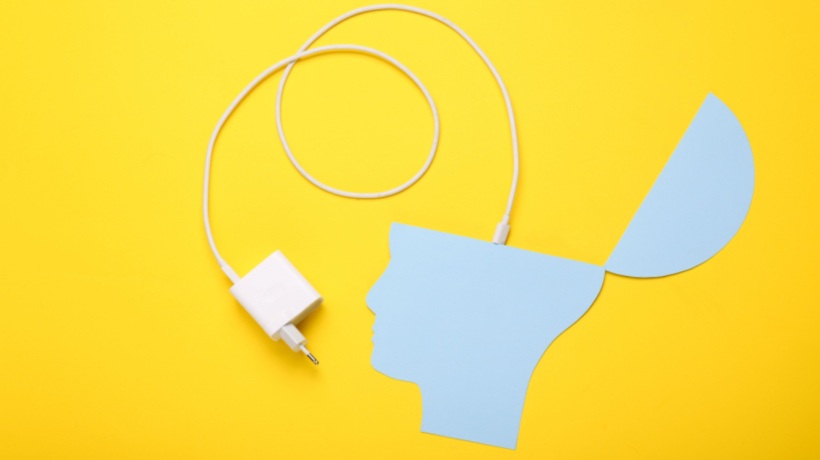Building Mental Resilience In Digital Learning
The advantages of digital learning are undeniable: flexibility, accessibility, and a wealth of resources. However, the pervasive use of technology has given rise to a concerning phenomenon: digital fatigue. As individuals navigate the intricacies of virtual classrooms, online courses, and eLearning platforms, the need to nurture mental resilience becomes paramount. In this article, we'll explore the concept of digital fatigue, its impact on mental resilience, and practical strategies to overcome it in the context of eLearning.
Understanding Digital Fatigue In The Learning Context
Digital fatigue is a pervasive issue that extends beyond the realms of work and personal life into the learning sphere, and we recognize the importance of addressing digital fatigue to ensure an optimal learning experience. Digital fatigue in the learning context is characterized by a sense of overwhelm resulting from prolonged exposure to screens, constant connectivity, and the unique challenges posed by virtual learning environments.
The Impact On Mental Resilience In The Learning Environment
In the context of digital learning, mental resilience is not just a desirable trait but a crucial skill. Mental resilience encompasses the ability to adapt to challenges, bounce back from setbacks, and maintain a positive mindset in the face of adversity. The demands of digital learning, including tight deadlines, complex digital interfaces, and the pressure to stay engaged, can take a toll on learners' mental well-being. Building and nurturing mental resilience is essential for both learners and trainers to thrive in the digital learning era.
Tailored Strategies To Nurture Mental Resilience
As key players in the eLearning industry, we play a vital role in supporting learners and trainers in overcoming digital fatigue. Here are some tailored strategies designed to foster mental resilience within the learning framework.
Personalized Learning Paths
Implement personalized learning paths to cater to individual learning styles and preferences. By acknowledging the diversity in how learners absorb information, this approach minimizes the risk of cognitive overload and fosters a sense of autonomy.
Interactive And Engaging Content
Create interactive and engaging eLearning content to keep learners actively involved. Our commitment to innovative learning solutions can be realized through the use of gamified elements, simulations, and interactive assessments that make the learning experience enjoyable while being effective.
Tech Detox Time
Introduce a designated "tech detox" time within the learning schedule. Encourage learners to step away from screens, engage in non-digital activities, and recharge. This intentional break can significantly reduce digital fatigue and contribute to enhanced focus when returning to online learning.
There are more methods to reduce digital fatigue, such as the ones below.
Mental Health Resources
This may include mindfulness exercises, stress-relief techniques, and informational modules addressing the psychological aspects of digital fatigue. Creating a supportive environment that acknowledges the importance of mental well-being contributes to a resilient learning community.
Flexible Learning Hours
Recognize that learners have diverse schedules and preferences. Allow learners to choose when they engage with the digital learning materials and empower them to take control of their learning journey, thereby reducing feelings of overwhelm and fatigue.
Community Building
Foster a sense of community within your learning platform. Facilitate virtual forums, discussion groups, or collaborative projects that enable learners to connect with their peers. This sense of belonging can act as a powerful buffer against the isolation and stress often associated with prolonged digital engagement.
Continuous Feedback Mechanism
Implement a continuous feedback mechanism to gauge learner satisfaction and well-being. Regular surveys, feedback forms, and open communication channels can provide valuable insights into the effectiveness of the digital learning experience and allow for timely adjustments.
The Way Forward: Balancing Innovation With Well-Being
In the digital learning era, the synergy between innovation and well-being is imperative. By implementing these strategies and fostering a culture that prioritizes mental well-being, we empower learners and trainers to thrive in the digital landscape without succumbing to the pitfalls of digital fatigue.
Conclusion
To conclude, the collaborative efforts between the trainers, or rather facilitators, the Subject Matter Experts, and the learning or program designers are pivotal in navigating the challenges posed by digital fatigue. By prioritizing mental resilience and well-being, Tesseract Learning sets a high standard within the eLearning industry. Through the seamless integration of innovative learning solutions with a focus on personalized learning experiences, interactive content, and community building, Tesseract Learning not only remains at the forefront of the eLearning landscape but also plays a central role in fostering a sustainable and enriching digital learning experience for all its users. Our learning platform, KREDO, encourages learners with personalized learning paths and community building through collaboration and discussion forums by helping learners connect with the trainers with their queries.
As we embrace the digital learning era, Tesseract Learning stands as a beacon, demonstrating that technological advancement and mental well-being can coexist harmoniously, paving the way for a resilient and empowered learning community. To know more about our products and services and how we can be of help to you, contact me or leave a comment below.


